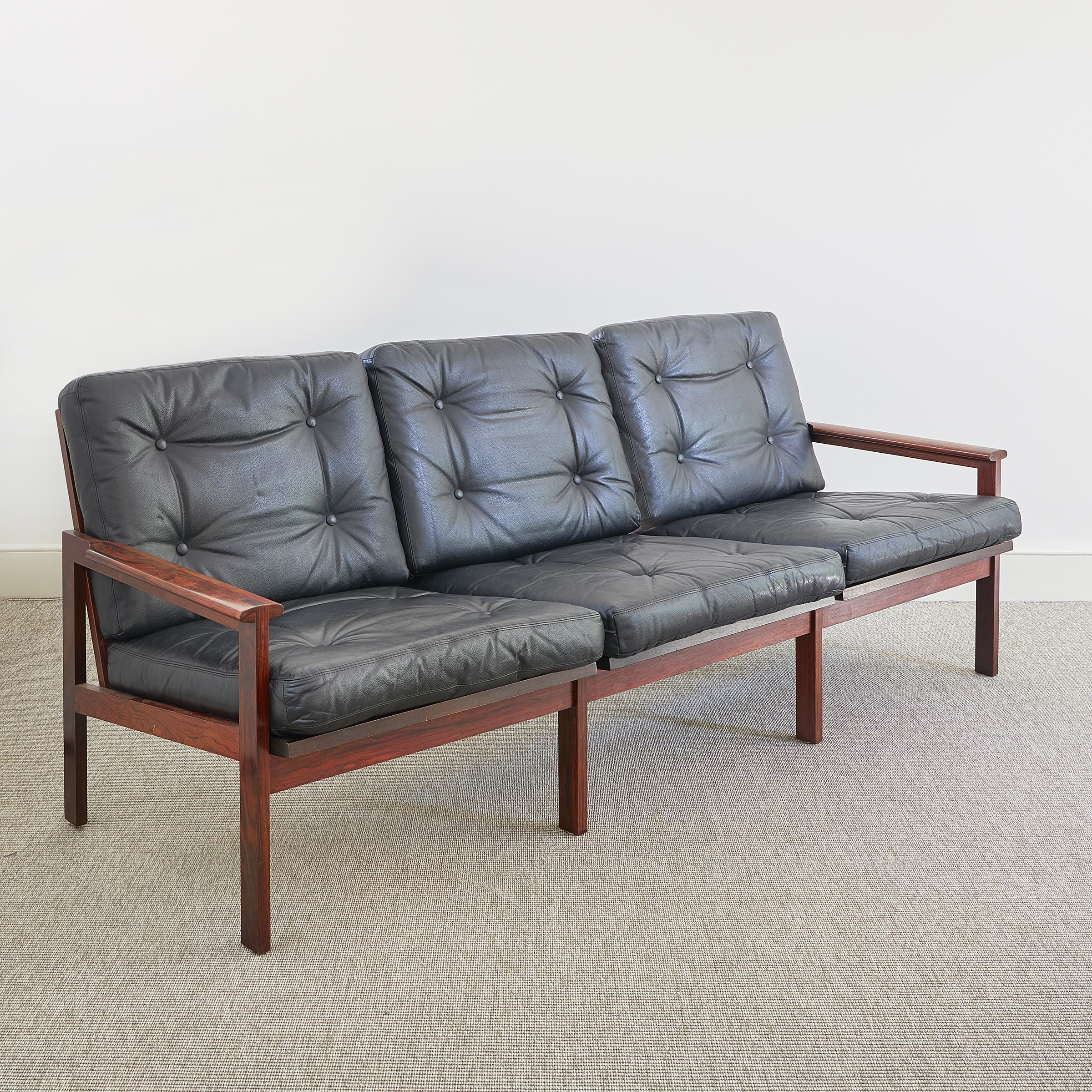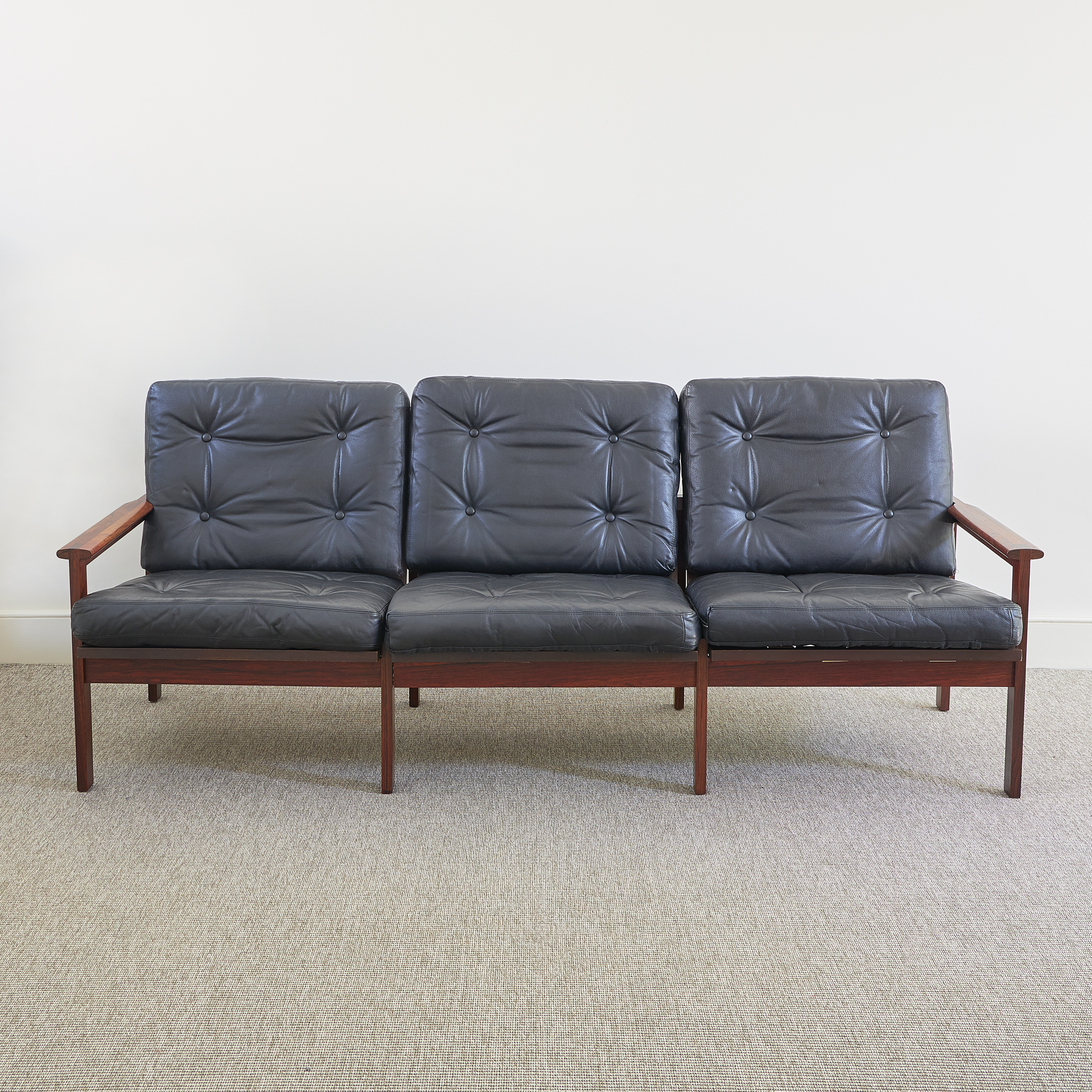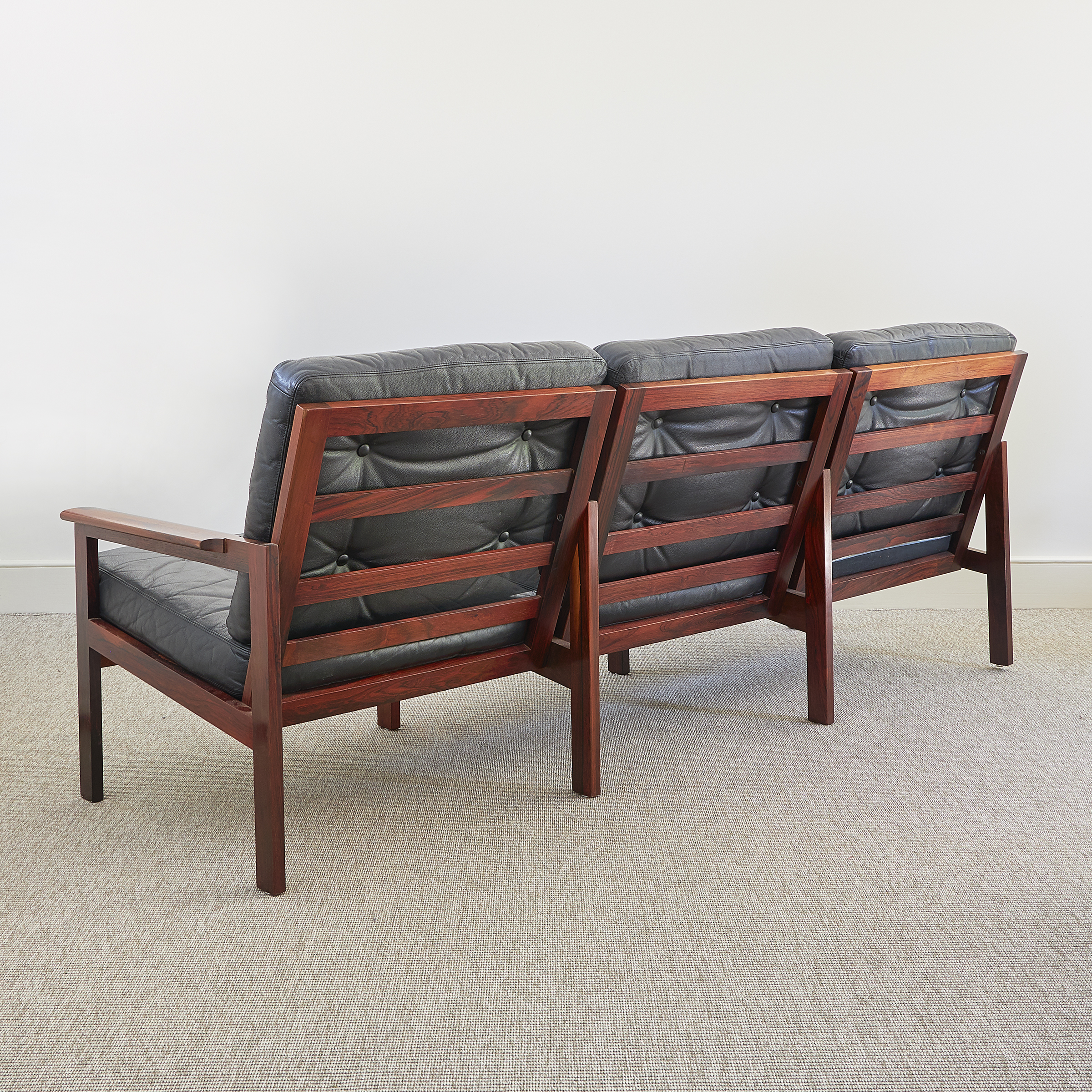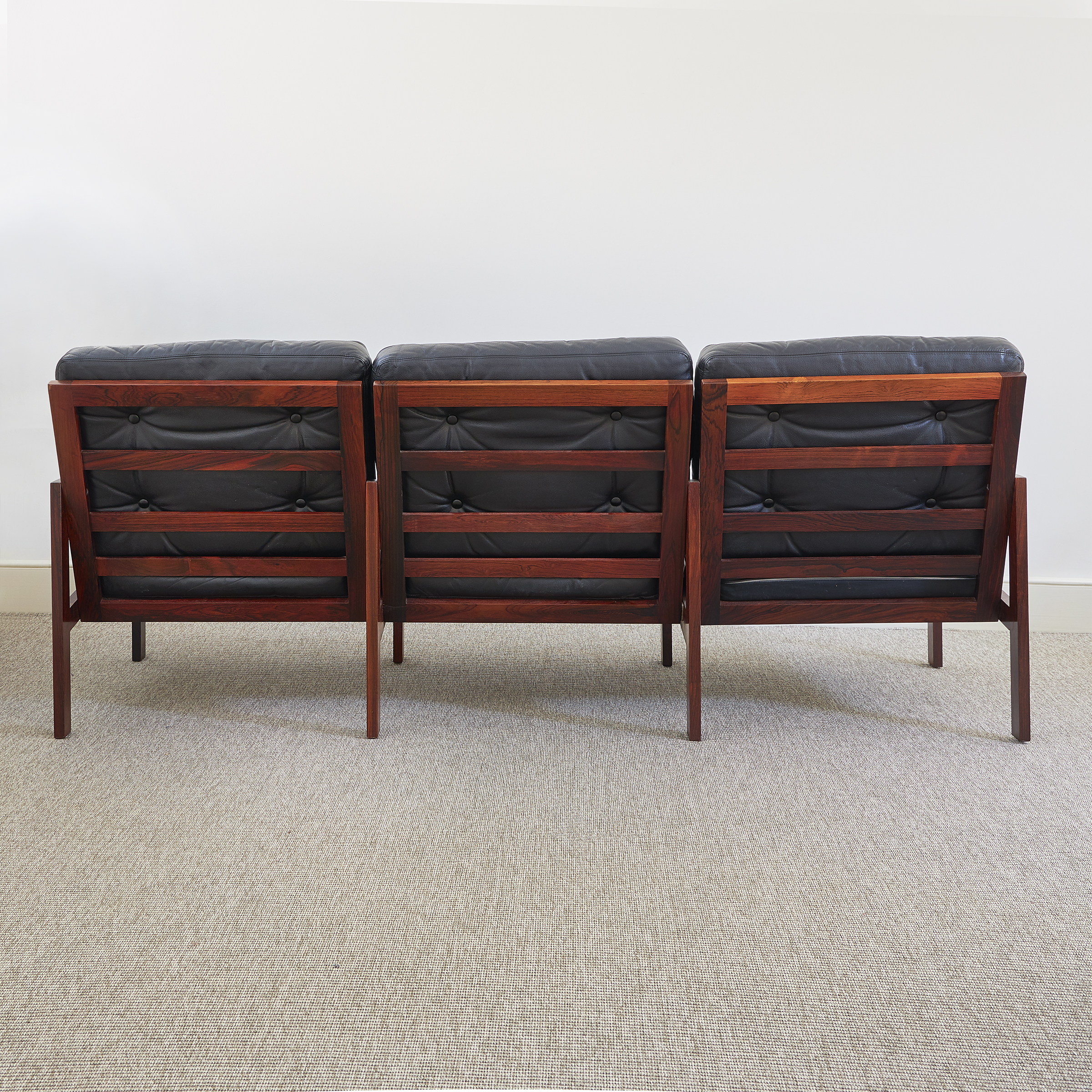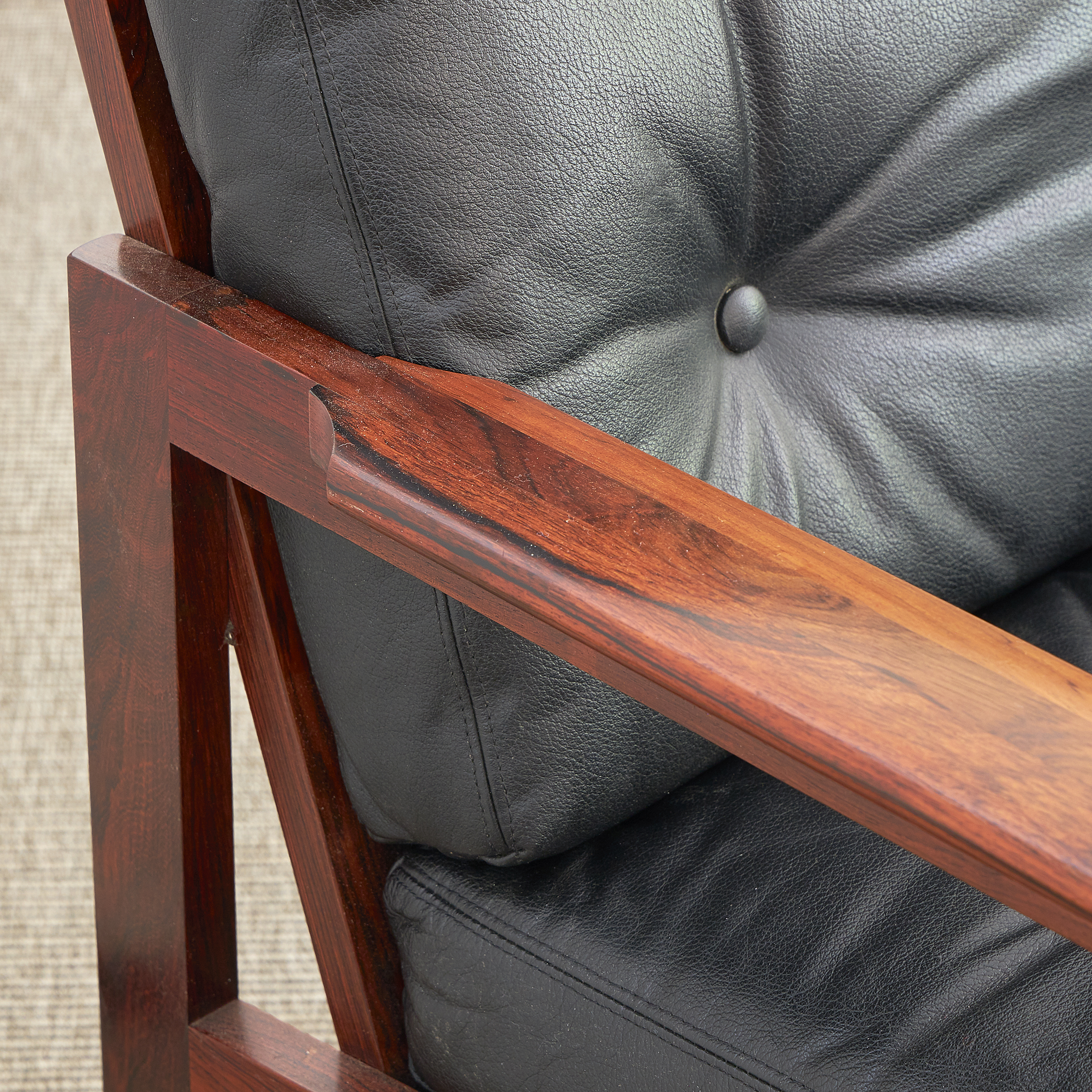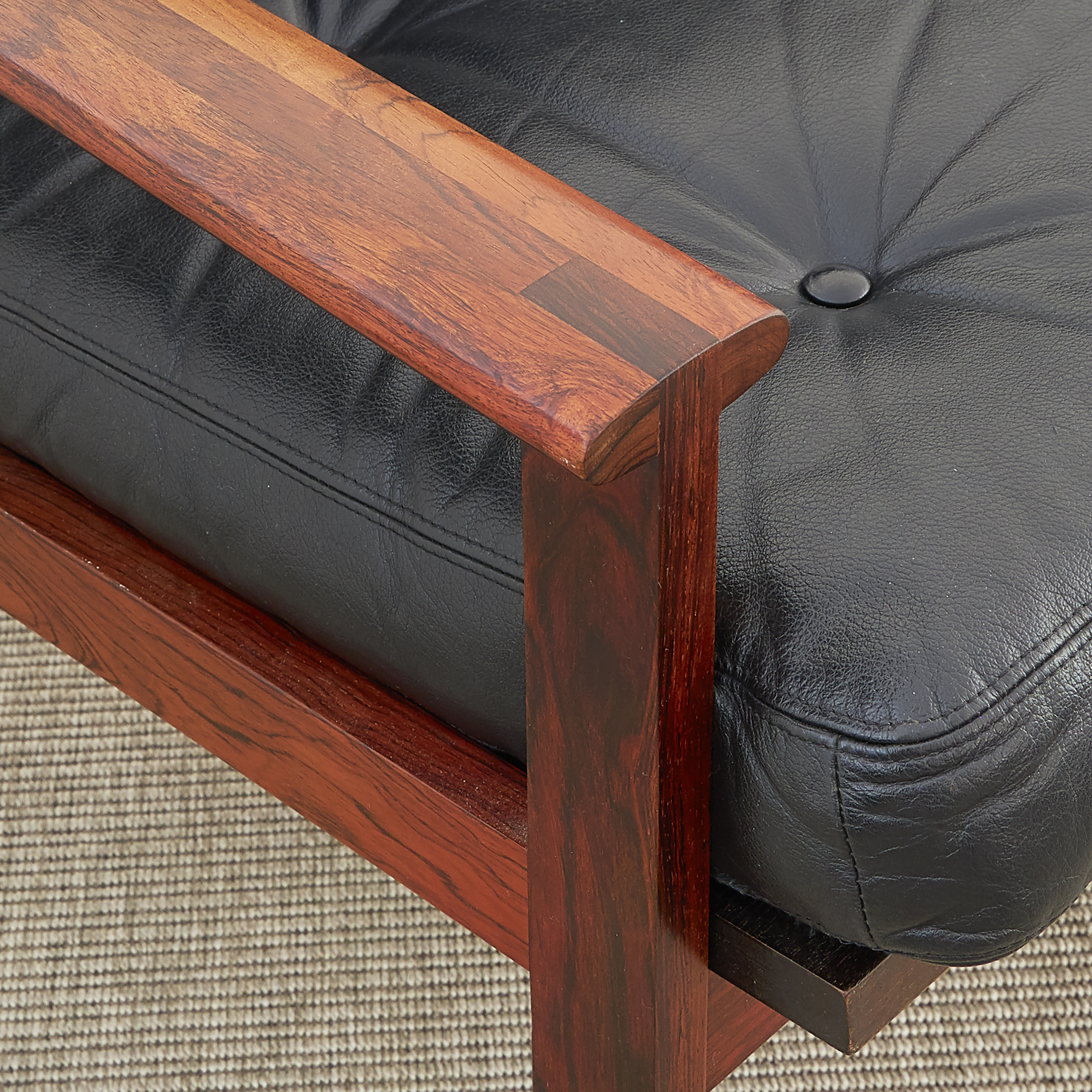More about this product
Sold with a Cites Article 10 licence No. 597548/01.
The Capella design is notable for its visible tenon joint on the arms.
Though very little biographical information survives for Danish architect-designer Illum Wikkelsø (1919-1999), the rich, organic quality of his designs found on the vintage market affirms his status as an active proponent of Scandinavian modernism in the post war era.
Like most Danish designers at the time, Wikkelsø studied cabinetry, graduating from the Copenhagen School of Arts & Crafts. He later held positions with the cabinetmaker Jacob Kjaer and the architectural firm of Peter Hvidt and Orla Molgaard-Nielsen. In 1944, Wikkelsø moved to Århus to work as an interior designer.
In 1954, he began designing his own furniture and, a few years later, established a workshop. Like many of his Danish contemporaries, Arne Jacobsen, Finn Juhl, and Hans Wegner, Wikkelsø’s designs emphasize formal simplicity and biomorphic silhouettes. Wikkelsø’s background in cabinetry engendered in him a profound understanding of materials and excellent attention to detail. Working with teak and rosewood, he captured delicate sculptural forms. Wikkelsø believed that furniture should be built to last while cradling the body and pleasing the eye.
Well-known designs from Wikkelsø’s career include T118 Coffee Table (ca. 1950s), Gyngestol Rocking Chair (1958), and Model 91 Lounge Chair and Ottoman for Mikael Laursen (ca. 1959), among others. A number of Danish manufacturers produced Wikkelsø’s designs, such as C.F. Christensen, Holger Christiansen, Eilersen, Farstrup, Silkeborg, and Søren Willadsen.


